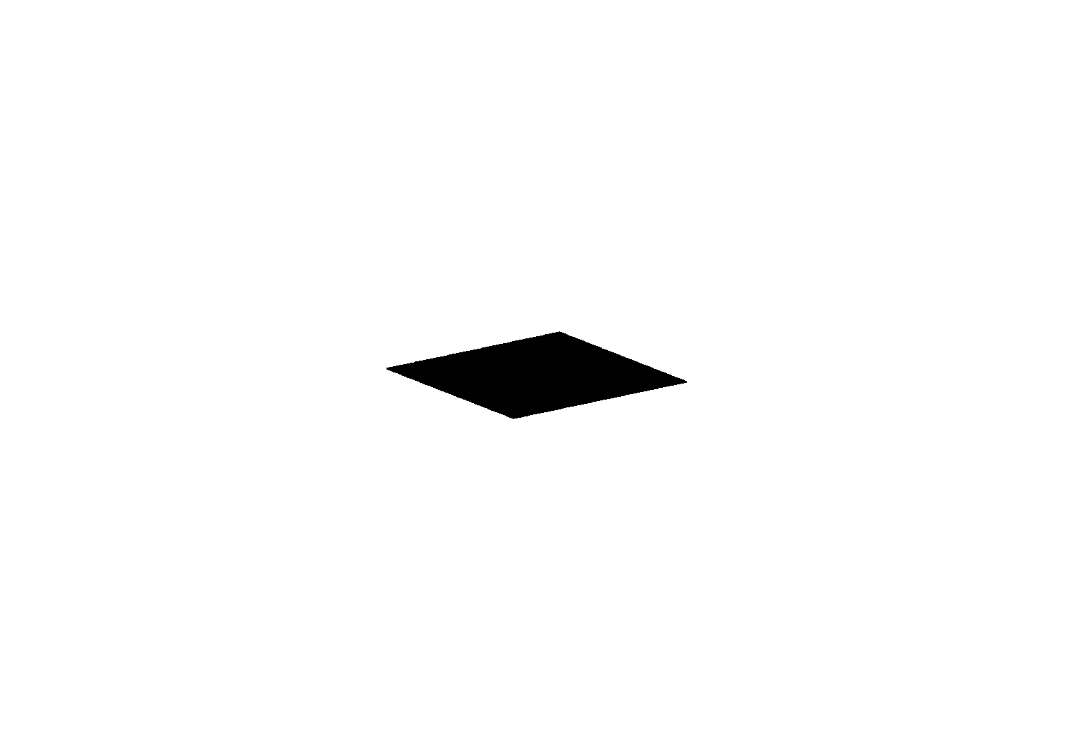So I've been trying to re-implement shadow mapping in my engine using directional lights, but I have to throw shade on my progress so far (see what I did there?).
Anyways, I had it working in a previous commit a while back but refactored the engine and am trying to redo some of the shadow mapping. Wouldn't say I'm the best in terms of drawing shadows so thought I'd come on here for some help.
Basically my issue seems to stem from the calculation of the light space matrix (seems a lot of people have the same issue). Initially I had a hardcoded projection matrix and simple view matrix for the light like this
void ZLight::UpdateLightspaceMatrix()
{
// …
if (type == ZLightType::Directional) {
auto lightDir = normalize(glm::eulerAngles(Orientation()));
glm::mat4 lightV = glm::lookAt(lightDir, glm::vec3(0.f), WORLD_UP);
glm::mat4 lightP = glm::ortho(-50.f, 50.f, -50.f, 50.f, -100.f, 100.f);
lightspaceMatrix_ = lightP * lightV;
}
// …
}This then gets passed unmodified as a shader uniform, with which I multiply the vertex world space positions by. A few months ago this was working but with the recent refactor I did on the engine it no longer shows anything. The output to the shadow map looks like this

And my scene isn't showing any shadows, at least not where it matters
.png)
Aside from this, after hours of scouring posts and articles about how to implement a dynamic frustrum for the light that will encompass the scene's contents at any given time, I also implemented a simple solution based on transforming the camera's frustum into light space, using an NDC cube and transforming it with the inverse camera VP matrix, and computing a bounding box from the result, which gets passed in to glm::ortho to make the light's projection matrix
void ZLight::UpdateLightspaceMatrix()
{
static std::vector <glm::vec4> ndcCube = {
glm::vec4{ -1.0f, -1.0f, -1.0f, 1.0f },
glm::vec4{ 1.0f, -1.0f, -1.0f, 1.0f },
glm::vec4{ -1.0f, 1.0f, -1.0f, 1.0f },
glm::vec4{ 1.0f, 1.0f, -1.0f, 1.0f },
glm::vec4{ -1.0f, -1.0f, 1.0f, 1.0f },
glm::vec4{ 1.0f, -1.0f, 1.0f, 1.0f },
glm::vec4{ -1.0f, 1.0f, 1.0f, 1.0f },
glm::vec4{ 1.0f, 1.0f, 1.0f, 1.0f }
};
if (type == ZLightType::Directional) {
auto activeCamera = Scene()->ActiveCamera();
auto lightDir = normalize(glm::eulerAngles(Orientation()));
glm::mat4 lightV = glm::lookAt(lightDir, glm::vec3(0.f), WORLD_UP);
lightspaceRegion_ = ZAABBox();
for (const auto& corner : ndcCube) {
auto invVPMatrix = glm::inverse(activeCamera->ProjectionMatrix() * activeCamera->ViewMatrix());
auto transformedCorner = lightV * invVPMatrix * corner;
transformedCorner /= transformedCorner.w;
lightspaceRegion_.minimum.x = glm::min(lightspaceRegion_.minimum.x, transformedCorner.x);
lightspaceRegion_.minimum.y = glm::min(lightspaceRegion_.minimum.y, transformedCorner.y);
lightspaceRegion_.minimum.z = glm::min(lightspaceRegion_.minimum.z, transformedCorner.z);
lightspaceRegion_.maximum.x = glm::max(lightspaceRegion_.maximum.x, transformedCorner.x);
lightspaceRegion_.maximum.y = glm::max(lightspaceRegion_.maximum.y, transformedCorner.y);
lightspaceRegion_.maximum.z = glm::max(lightspaceRegion_.maximum.z, transformedCorner.z);
}
glm::mat4 lightP = glm::ortho(lightspaceRegion_.minimum.x, lightspaceRegion_.maximum.x,
lightspaceRegion_.minimum.y, lightspaceRegion_.maximum.y,
-lightspaceRegion_.maximum.z, -lightspaceRegion_.minimum.z);
lightspaceMatrix_ = lightP * lightV;
}
}What results is the same output in my scene (no shadows anywhere) and the following shadow map
.png)
I've checked the light space matrix calculations over and over, and tried tweaking values dozens of times, including all manner of lightV matrices using the glm::lookAt function, but I never get the desired output.
For more reference, here's my shadow vertex shader
#version 450 core
#include "Shaders/common.glsl" //! #include "../common.glsl"
layout (location = 0) in vec3 position;
layout (location = 5) in ivec4 boneIDs;
layout (location = 6) in vec4 boneWeights;
layout (location = 7) in mat4 instanceM;
uniform mat4 P_lightSpace;
uniform mat4 M;
uniform mat4 Bones[MAX_BONES];
uniform bool rigged = false;
uniform bool instanced = false;
void main()
{
vec4 pos = vec4(position, 1.0);
if (rigged) {
mat4 boneTransform = Bones[boneIDs[0]] * boneWeights[0];
boneTransform += Bones[boneIDs[1]] * boneWeights[1];
boneTransform += Bones[boneIDs[2]] * boneWeights[2];
boneTransform += Bones[boneIDs[3]] * boneWeights[3];
pos = boneTransform * pos;
}
gl_Position = P_lightSpace * (instanced ? instanceM : M) * pos;
}my soft shadow implementation
float PCFShadow(VertexOutput vout, sampler2D shadowMap) {
vec3 projCoords = vout.FragPosLightSpace.xyz / vout.FragPosLightSpace.w;
if (projCoords.z > 1.0)
return 0.0;
projCoords = projCoords * 0.5 + 0.5;
// PCF
float shadow = 0.0;
float bias = max(0.05 * (1.0 - dot(vout.FragNormal, vout.FragPosLightSpace.xyz - vout.FragPos.xzy)), 0.005);
for (int i = 0; i < 4; ++i) {
float z = texture(shadowMap, projCoords.xy + poissonDisk[i]).r;
shadow += z < (projCoords.z - bias) ? 1.0 : 0.0;
}
return shadow / 4;
}
...
...
float shadow = PCFShadow(vout, shadowSampler0);
vec3 color = (ambient + (1.0 - shadow) * (diffuse + specular)) + materials[materialIndex].emission;
FragColor = vec4(color, albd.a);and my camera view and projection matrix getters
glm::mat4 ZCamera::ProjectionMatrix()
{
glm::mat4 projectionMatrix(1.f);
auto scene = Scene();
if (!scene) return projectionMatrix;
if (cameraType_ == ZCameraType::Orthographic)
{
float zoomInverse_ = 1.f / (2.f * zoom_);
glm::vec2 resolution = scene->Domain()->Resolution();
float left = -((float)resolution.x * zoomInverse_);
float right = -left;
float bottom = -((float)resolution.y * zoomInverse_);
float top = -bottom;
projectionMatrix = glm::ortho(left, right, bottom, top, -farClippingPlane_, farClippingPlane_);
}
else
{
projectionMatrix = glm::perspective(glm::radians(zoom_),
(float)scene->Domain()->Aspect(),
nearClippingPlane_, farClippingPlane_);
}
return projectionMatrix;
}
glm::mat4 ZCamera::ViewMatrix()
{
return glm::lookAt(Position(), Position() + Front(), Up());
}Been trying all kinds of small changes but I still don't get correct shadows. Don't know what I'm doing wrong here. The closest I've gotten is by scaling lightspaceRegion_ bounds by a factor of 10 in the lightspace matrix calculations (only in X and Y) but the shadows are still nowhere near correct.
Any help here would be much appreciated. Let me know if I left out any important code or info.
EDIT: Camera near and far clipping planes are set at reasonable values (0.01 and 100.0, respectively), camera zoom is 45.0 degrees and scene→Domain()→Aspect() just returns the width/height aspect ratio of the framebuffer's resolution.



